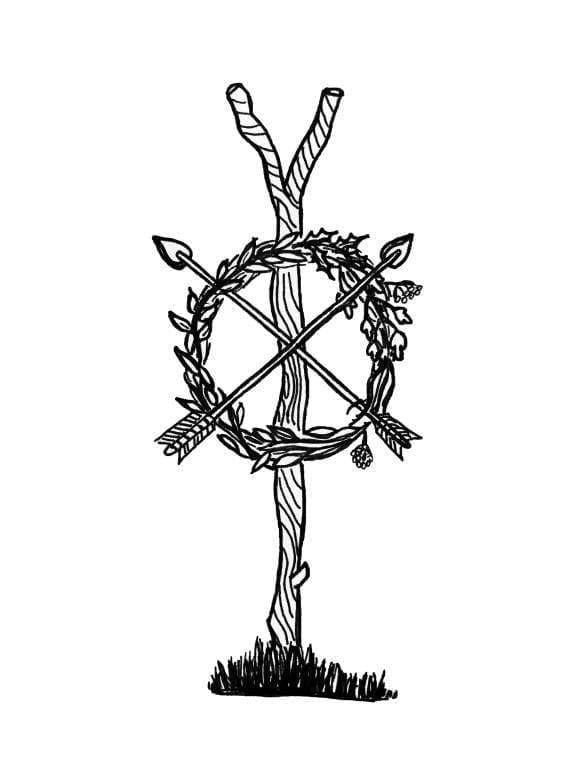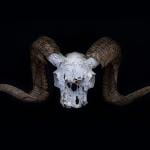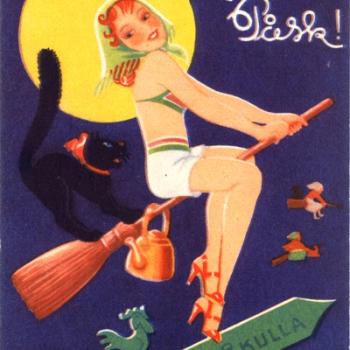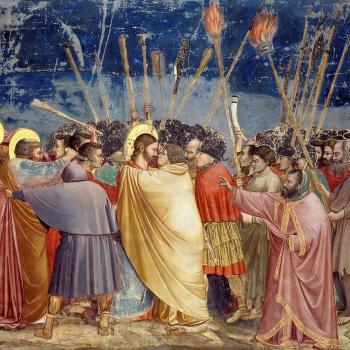The Witch’s Stang is often thought to have been introduced into modern practice by the late Robert Cochrane (alias Roy Bowers 1931-66). It is speculated that Cochrane instigated his own tradition in contrast to modern neo-witchcraft and as an alternative to the Gardnerian style which would become known globally as Wicca. He (Cochrane) often described his tradition as hereditary, being in his family line for generations, but was elusive on this point. Professor Ronald Hutton, leading scholar on the history or modern paganism and witchcraft, is clear on this point, however:
…if he [Cochrane] actually did compose all the rituals and their underpinning ideas himself, then the word for him is surely not ‘charlatan’, but ‘genius’. [1]
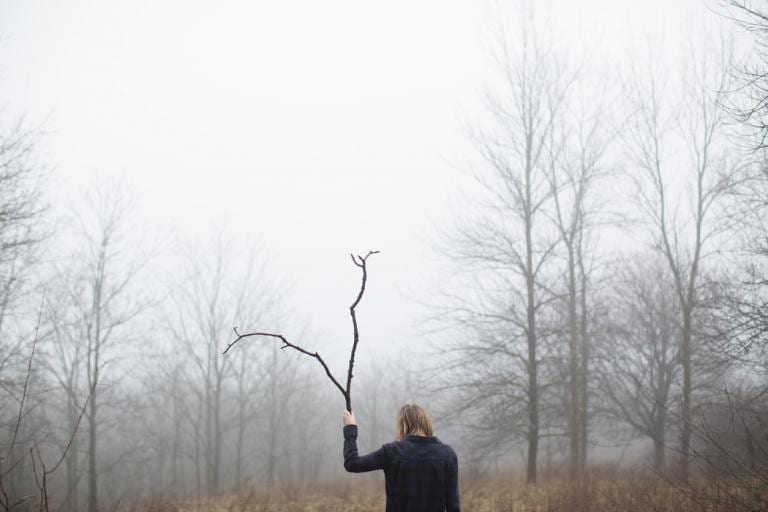
In its central role, the Stang represents the World Tree and, according to Evan John Jones, can take centre stage within a working circle [2], or more appropriately a compass. In this respect, it acts as the axis mundi, and is the true altar of the witch mystic.
Here is discussed the role of the Stang and, by necessity, how the compass might operate and how the witch’s staff is central to its purpose. To do this, some more meaningful observations must be made about mythology, symbolism and, hopefully, purpose for the mystic. Forget everything you have read about circles to protect from outside spirits, or to contain energy. Where energy is concerned, we are better to read awareness in its stead, for it is said that where thought goes, energy follows. More appropriate than ‘energy’, with all its New Age connotations, is the word ‘awareness’, for shifting consciousness is what the witch mystic is all about, isn’t it? Moving your point of awareness, such as shapeshifting in its truest form, utilising the natural world in its splendour, helps to leap the hedge that the self has formed to protect the ego. Letting go of the self is our first task.
It is important to remember here that, historically, ancient cultures around the globe have a tradition of the world navel, centre and axis mundi, the point of creation and beginning of the world, out of which all else spreads like a carpet. Also, we must remember that axis mundi incorporates the meeting of the four cardinal directions, or compass as well as above and below.
Earth mysteries author, Paul Devereux, asserts that the celestial pole, as a focus for the conscious mind, is a passage between this world and other worlds, or states of consciousness: “the only logical direction ‘perpendicular’ to a three dimensional space is ‘within’” [3].Thus, the navel acts as a ‘focus’ to bring the world within oneself, sublimating ego. Could this be one of the prime functions of the Stang?
At the centre of may civilisations was the axis mundi, or navel, which was even reflected in buildings as the hearth, or centre, of the home. According to Devereux, the Roman Latin for ‘hearth’ was ‘focus‘, and is often a fiery point of contemplation and for many an altar in its original and literal sense as a place of burnt offering. So, the Stang erected in like manner, is an altar and, appropriately, a place of offering and flame.
I can conceive that a ritual where a circle is marked out and a Stang placed in the centre might now be more potent and have more meaning. The use of the term ‘compass’ is an act of marking the cardinal points, as the ancients did when establishing a city or dwelling, identifying the omphalos, or navel, and erecting the World Tree toward the celestial pole star. The compass is thus marked and the Stang raised in the centre, acting as a focal point (from the Latin, foci, ‘hearth’, fireplace) and bringing the world inward. This is the precise opposite of to the occult logic of creating a circle to act as a barrier, or vehicle to travel the worlds. In fact, in the eye of the mystic, it is a means of realising the whole world and is deceptive in its simplicity.
Crossroads are featured in many legends and are variously sacred to Woden, Hecate, Papa Legba, and others, a place for the hanged man. Why would a crossroads be considered appropriate for a hanged man? Paul Devereux provides a clue when he discusses liminal attributes. The word originated in Latin limen, meaning threshold, and is described as a ‘between point’. Examples of liminal time would be twilight, often when we are told we are most likely to encounter fairies. The crossroads, as liminal space, is a meeting fo two or more roads and a threshold in itself. In psychology, liminality is conscious state of betweenness.
The potent converging of symbolism to invoke a liminal sense of being on the threshold should be explored in the mind and in the ritual act, simple and without ceremony. This is a time to put away the mundane, relinquish all attachment to your everyday life that supports the self and slip between the worlds.
Again, the myth of Odin upon Yggdrasil springs to mind and the crucifix may actually be a perfect symbol representing the axis mundi again, reaching to the four cardinal directions. Furthermore, it has the image of one sacrificing the self to the self in the attainment of a state of gnosis.
All this brings to mind some remarks of Robert Cochrane in that he describes a correct way to approach the altar [4]. Famous for his misleading comments and ‘grey magic’, Cochrane may have hidden many truths wrapped in his riddles, allowing the listener to unravel the mystery for themselves.
Of course, the beginning of ritual should mark a shift in awareness from the mundane to the mystical if correctly prepared and performed, instilling a totally new worldview that allows for greater success in the mystical operation. Erecting the Stang is the first act of crossing the threshold.
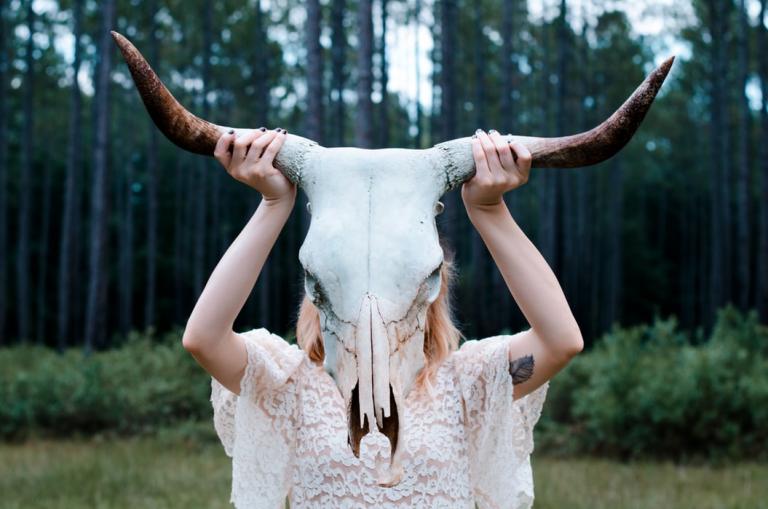
Intrinsic to all this is the realisation that we, each of us, are the centre of our world. Not in any egocentric way. At once, we are a part of the macrocosm, yet a small part in the microcosm. Devereux goes on to discuss incorporating this moment of conscious awareness into our daily lives. For example, consider that the world around you is occurring in your mind as the senses feed to the brain pure strands of information, which the brain then interprets to provide a picture of the world you perceive (much like Neo in The Matrix, who sees the world as lines of binary code). The world is created in the dome of the cranium, that living mound, where a constant stream of information is delivered from the senses we rely so heavily upon. Further, our consciousness is the constant monologue within concerting the condition of the biological vehicle. If we can but still the mind, the world might just open up before us like a wonderland.
Evan John Jones discusses the traditional Stang as an ash pole with an iron head in the image of a pitch fork, or otherwise bent to resemble horns; maybe even sockets for fixing horns to the head of the staff. In addition, the foot is clasped in iron, or a shod hoof. Sometimes a forked pole is all that is needed and there is no reason why this should not work just as well. However, the mind sometimes needs a prompt. Therefore, providing the iron parts, ‘hoof and horn’, provokes the image within the mind that ensures the awareness is shifted in the operation. Perhaps this is why the Stang also represents the Horned One in order to encourage those primal feelings.
The question kept arising in my mind, why clad the foot in iron. One thing that always concerned me was the use of iron in ritual and workings considering that there are so many references in legend and lore of the elven folk, faeries, otherworlders, being offended by such material metals. Was this harkening back to Stone Age memory when we were collectively suspicious of new technologies? Of course, Robert Cochrane’s short lived blacksmithing career is often remarked upon, especially as he defied himself as belonging to the Clan of Tubal Cain, the Biblical Smith. Some other legends, however, revere the Smith as a god, such as Wayland. Jones tells us that the early Smith was considered an alchemist of sorts, transmuting stones into new materials in a pseudo-diving manner with fire. Out of this was, perhaps, born the notion that the “unnatural iron was able to neutralize the natural magic of a spell”[5]. As the Stang is consecrated before the act of shodding in iron, the Stang acts as a kind of storage vessel for the potential of the Goddess invoked at the moment of consecration and bound at either point.
Evan John Jones further enforces this theory when he states:
In a coven sense, the ash stang is the guardian of the gateway of the circle, the link between the world of the Goddess and the world of the circle. [6]
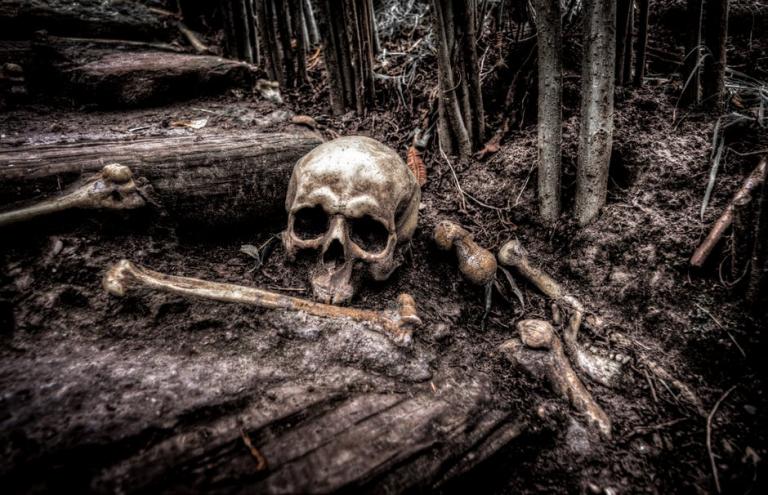
Finally, the Stang is obviously a representation of the Horned God, or sacred King. Again, looking at the writings of Jones, the Stang could be seen as the divine child, Mabon ap Modron. R. J. Stewart in UnderWorld Initiation describes Mabon as the Child of the Light, “…related to or identical with the young Apollo” [7]. Another epithet of such a figure could be Lucifer, again described by Stewart as “…the universal light inherent within the body of the earth.”[8]. Indeed, Lucifer, the light bearer, is often seen to be the illuminating force within the Old Craft and Luciferian Gnosticism.
That the earth is a living organism is expounded by James Lovelock’s Gaia Hypothesis; we see that the earth is a sum of its parts, capable of maintaining equilibrium via a self-regulating system that includes and supports life-forms that dwell upon it. If we accept hat our conscious mind and the earth are bound as one, we can see that Lucifer is, in fact, within us and ready to release His potential, that universal light. Curiously, the ‘shining ones’ is a title and metaphor often applied to fairies, elves, spirits, gods and angels. When we look at the words ‘illumination’ and ‘enlightenment’, perhaps the mystic shines through.
This digression from the use and function of the Stang is meant to explore one concept of the forked staff as a representation of the Horned God. Robert Cochrane gives it thus:
It represents the Old Horned God/King of the forest glade. The returning of the Old Year King reincarnated back into the body of the Young Horned God/Child born of the Goddess in her aspect of Diana of the Greenwoods and sired by the Old Horned God himself.
So the Stang, in this sense, is the potential of the Horned God as expressed in the mythic narrative or theme of Robert Graves, whereby the opponent, as symbolised by the conflict of the old and young, is within:
The Theme, briefly, is the antique story, which falls into thirteen chapters and an epilogue, of the birth, life, death and resurrection of the God of the Waxing Year; the central chapters concern the God’s losing battle with the God of the Waning Year for the love of the capricious and all-powerful Threefold Goddess, their mother, bride and layer-out. The poet identifies himself with the God of the Waxing Year and his Muse with the Goddess; the rival is his blood-brother, his other self, his weird.[9]
One could see in the Stang a representation of life and death in a recurring cycle via the Young/Old Horned God and the metaphor of the seasons. Here we see the resurrected God theme, common to many cultures and times, and the appeal to the most pressing of all subjects: life beyond the grave. Here, again, the Stang is once more the liminal, standing between the old and new which is ever in conflict, yet the same.
When we look at Cochrane’s writing with the light of The White Goddess, we see that the conflict between the New and Old God, as outlined as the Theme above, is actually resolved by the realisation and unification of the poet with his rival, other self. Of course, complete unification may only be possible upon the death of the self, which would mean shuffling off this mortal coil. Therefore, this eternal struggle must continue for us on this plane until such time as the mystic within opens up, much as the metaphorical struggle of the seasons is perpetuated year on year.
The Rollright Ritual is a book by occultist and ceremonial magician William G. Gray. Gray was much admired and respected by Cochrane and the pair exchanged famous correspondence and the sharing of ideas, from which much may be gleaned. Interestingly, The Rollright Ritual appears to owe a considerable amount to Cochrane’s influence upon Gray and his works. Conceptually, the Rollright Ritual stands as an often overlooked contribution to the publicly available Cochrane teachings and provides an insight into a great many of the ideas that Cochrane may have concealed within his small number of writings. Within Gray’s work, he surmises that the sacred King was sacrificed “…fairly frequently, it seems, probably several a year depending on local circumstances and exigencies. hen the occasions were soon cut to two a year, Summer and Winter, reducing to an annual event, and then seven year celebration.”[10]
In Witchcraft: A Tradition Renewed, Evan John Jones and Doreen Valiente provide a layout for a system in the style of the Cochrane tradition that is made available to a broader audience. In this, they suggest that the ‘Lady’and officers could be appointed on a seven year basis, renewing oaths or passing over positions at the end of that time. Within the Clan of Tubal Cain itself, this is rendered in a slightly different manner with the Maid being lifelong commitment as the inherent bearer of the legacy and tradition. Where kindred groups are adopted, subsidiary Maids are also subject to a seven year fealty rule, the same as all officers including the Magister.[11]
Gray also uses a forked staff in The Rollright Ritual and we see anther confirmation of the Stang symbolism outlined above. Using the term “rod” to refer to the instrument, he explains how he could also take the word “rood”: “… it calls up the Cross Tree, or Life Tree of a living sacrifice. This is essentially the Hope of Man from every angle.“[12]
The Stang is a difficult and complex tool to explore and the is by no means complete, nor necessarily accurate. However, the writer conceives this as a plausible exploration of the symbol and use of the Stang, possibly introduce by Robert Cochrane, and encourages the assimilation of some of the above into ritual work and practice. This began as an investigation into the Witch’s Stang and has developed into a complex analysis of a potential system for attaining union with Divinity. In plain terms, those of us that do not belong to an extant tradition must use our intuition to discern our path. The best tools on the old path are, in my opinion, coming sense, intuition and luck. I believe the ways are around us, but we must approach and internalise them ourselves. Nobody can do it for you.
On a last note, in Robert Cochrane’s letter to Joe Wilson, he makes it clear that provided within the correspondence are clues to a basic first rite. Read closely, it doesn’t take a great amount of work to decipher. however, given the nature of the rite, perhaps the omphalos and altar might have a more appropriate vessel…?
Post-Script:
This essay was first published in White Dragon (No. 58, Samhain 2008). It is an interesting exercise to review this and note the naivety and areas of lack, but also to marvel at the passion and vision that informed this work. A good deal of it, in expression and content, at times rather pompous, overly wordy, simplistic and even flawed, nevertheless still hold for me a magic which is inherent within its essence. I have only edited the most cringeworthy parts, and with care even there. It is, then, a faithful reproduction of the essay as it appeared.
The Rollright Stones are a famous megalithic circle of stones, dolmen and standing stones on the Warwickhire Oxfordshire border in England. In its recent history, it has been used by Gardnerian Wiccans including the Crowthers, Cunning Man Norman Gill, the Regency, among others. It is a beloved site for so many past and present, including the late Terry Pratchett. Unfortunately, the continued sprawl of urban living is threatening the road which runs through the site, separating the King Stone from the main ring. Please consider signing the petition to attempt to persuade the relevant councils to reconsider their decisions. Thank you.



